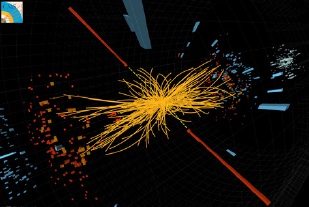The Higgs Particle: What is it, and Why did it Lead to a Nobel Prize in Physics?
Abstract
Back in 1964, the theoretical physicists François Englert and Robert Brout, as well as Peter Higgs, suggested an explanation for the fact that most elementary particles —such as the electron— have a mass. This scenario predicted a new particle, which has been observed experimentally only just now at CERN (the European Organization for Nuclear Research). This discovery led to the Physics Nobel Prize 2013. Here we sketch in simple terms the concept of the Higgs mechanism, and its importance in particle physics.

Published
Dec 15, 2013
How to Cite
BIETENHOLZ, W..
The Higgs Particle: What is it, and Why did it Lead to a Nobel Prize in Physics?.
Revista Cubana de Física, [S.l.], v. 30, n. 2, p. 109-112, dec. 2013.
ISSN 2224-7939.
Available at: <http://revistacubanadefisica.org/index.php/rcf/article/view/RCF_30-2_109_2013>. Date accessed: 19 apr. 2024.
Issue
Section
For Physicists and Non-Physicists
This work is licensed under the Creative Commons Attribution-NonCommercial 4.0 International (CC BY-NC 4.0) license.








